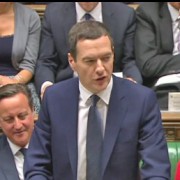Summer Budget 2015 – Key Tax Takeaways
The Summer Budget was announced last week and in this blog post we’ll take a look at only those changes which will affect ordinary taxpayers and SMEs.
In his opening remarks, the Chancellor of the Exchequer, George Osborne, promised:
A Budget … to keep moving us from a low wage, high tax, high welfare economy; to the higher wage, lower tax, lower welfare country.
So, taking each of those goals in turn …
Higher Minimum Wages
With regard to the higher wages promise, Osborne announced that there would be a new National Living Wage of £7.20 per hour from April 2016 for those aged over 25 and over, rising to more than £9 per hour by the year 2020.
Lower Tax
With regard to the lower tax promise, the Personal Allowance (the amount people can earn before paying any tax) will increase – as anticipated – from £10,600 in the financial year 2015-16 to £11,000 in 2016-17. A longer term plan is to increase this still further to £12,500 by 2020. The ultimate ambition is pass a law to make sure that those working 30 hours a week and earning the National Minimum Wage will pay no tax whatsoever, although clearly this will need further clarification in due course.
Dividend tax will also be reformed. Here the existing dividend tax credit (this reduces tax paid on dividends from shares) will be replaced by a new £5,000 tax-free allowance on income from shares from April 2016 and this will be available to all taxpayers. To offset the cost of this to the Exchequer, those with more significant dividend income will see an increase in the tax rate they pay.
Inheritance tax will also be subject to changes from 2017-18. The idea is to allow individuals to each have a ‘family home allowance’ which they can pass on to their children or grandchildren, tax-free, when they die. This allowance will be added to the existing Inheritance Tax threshold currently set at £325k and will potentially allow property up to the value of £1m to be passed down from 2020-21 (see table below). For those with estates valued over £2m the allowance will be gradually withdrawn.
This is how the effective Inheritance Tax thresholds will look in 2020-21: Read more



 It’s now time to start the process of claiming your tax refund if you are a subcontractor working within the construction industry and have been paying tax, in advance, through the Construction Industry Scheme (‘CIS’). In this article we will tell you how you qualify and how to claim your tax refund. First, though, a little bit of background to the scheme:
It’s now time to start the process of claiming your tax refund if you are a subcontractor working within the construction industry and have been paying tax, in advance, through the Construction Industry Scheme (‘CIS’). In this article we will tell you how you qualify and how to claim your tax refund. First, though, a little bit of background to the scheme: Do you have online banking? Sending us downloaded statement information straight from your online banking means we can more easily import the data into our system and check for expenses and income which might otherwise have been overlooked. It can also fill in the gaps where you are missing receipts or invoices. This simple service could therefore save both time and money! Most online banking platforms allow you to export this information, for example as a CSV file, and this format is perfect for our accounting system.
Do you have online banking? Sending us downloaded statement information straight from your online banking means we can more easily import the data into our system and check for expenses and income which might otherwise have been overlooked. It can also fill in the gaps where you are missing receipts or invoices. This simple service could therefore save both time and money! Most online banking platforms allow you to export this information, for example as a CSV file, and this format is perfect for our accounting system. Have you ever wondered how much of one’s total income is taken up in tax? And I don’t mean just Income Tax. I mean in ALL taxes paid by ordinary taxpayers throughout the course of a year. Such a figure would need to take into account National Insurance (income tax in all but name, some might say), the insidious Value Added Tax or ‘VAT’ – which on its own is a hefty 20% tax on what is often already taxed money for most ordinary taxpayers, and don’t forget to include Council Tax and finally, of course, Income Tax itself.
Have you ever wondered how much of one’s total income is taken up in tax? And I don’t mean just Income Tax. I mean in ALL taxes paid by ordinary taxpayers throughout the course of a year. Such a figure would need to take into account National Insurance (income tax in all but name, some might say), the insidious Value Added Tax or ‘VAT’ – which on its own is a hefty 20% tax on what is often already taxed money for most ordinary taxpayers, and don’t forget to include Council Tax and finally, of course, Income Tax itself. On 5 December 2013 George Osborne, Chancellor of the Exchequer, gave his Autumn Statement in Parliament. Key announcements included:
On 5 December 2013 George Osborne, Chancellor of the Exchequer, gave his Autumn Statement in Parliament. Key announcements included: